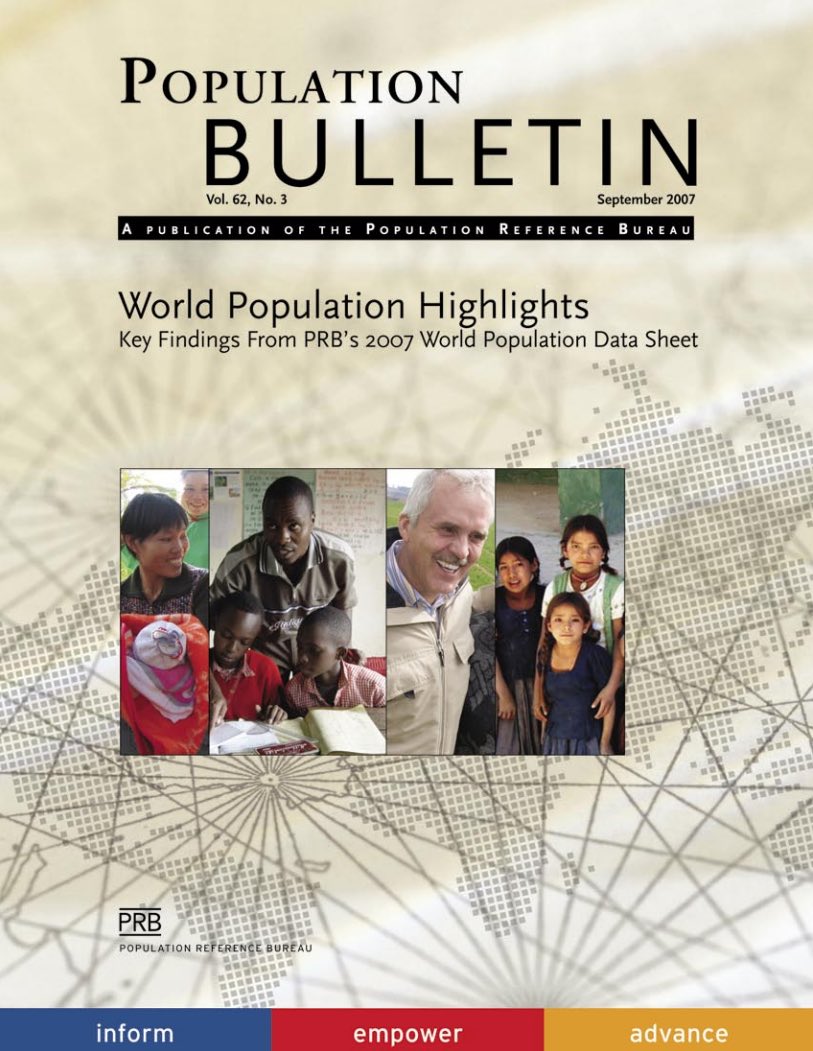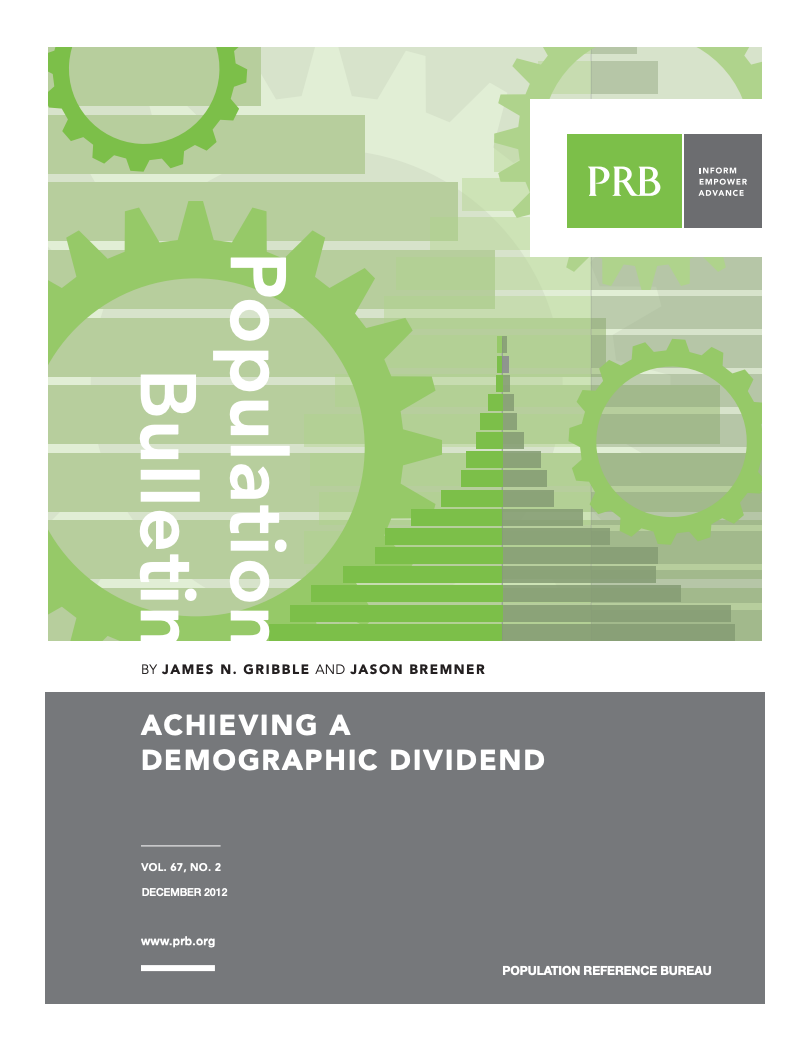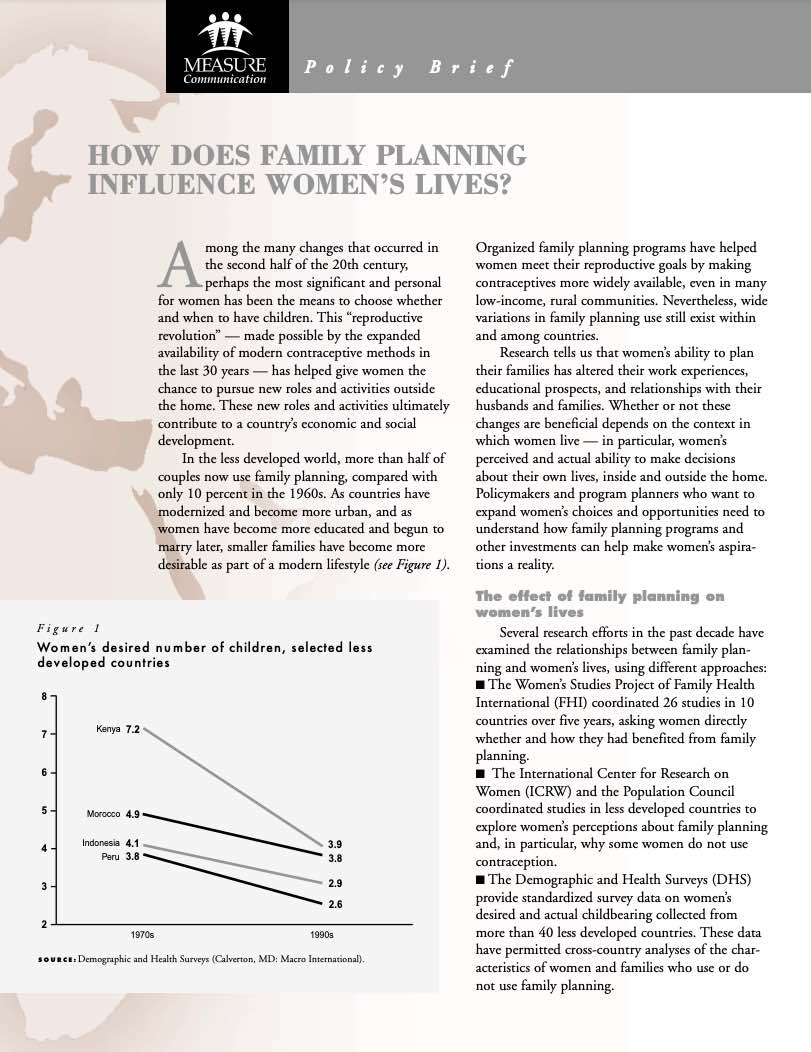World Population Highlights 2007: Migration
2007) In 2005, about 191 million people—3 percent of the world's population—were international migrants, according to UN estimates.

2007) In 2005, about 191 million people—3 percent of the world's population—were international migrants, according to UN estimates.
Project: IDEA: Informing Decisionmakers to Act
(2011) Improvement in gender equity and women's empowerment has been uneven around the world and slow in many regions, according to the World's Women and Girls 2011 Data Sheet.
(2013) In Zambia, girls often start childbearing before they are 18 years old, and many women end childbearing after the age of 35 (see Figure 1).1 This long period of childbearing contributes to Zambia's high total fertility rate, or average number of children per woman, which at 6.2 is one of the highest in sub-Saharan Africa.


2007) In 2005, about 191 million people—3 percent of the world's population—were international migrants, according to UN estimates.


Project: Demographic Forecasting Services—AMBAG
Two demographic groups—young adults ages 20 to 34 and older adults ages 65 and older—are reshaping the population in rural America.
(2008) The impact of the devastating financial crisis on the U.S. workforce is becoming clear. Numerous economic indicators have pointed downward following the federal government's $700 billion bank bailout in October 2008.
(2001) In a 2001 report published by Amnesty International, a 27-year-old Ukrainian psychologist and social worker told of being trafficked to Israel.